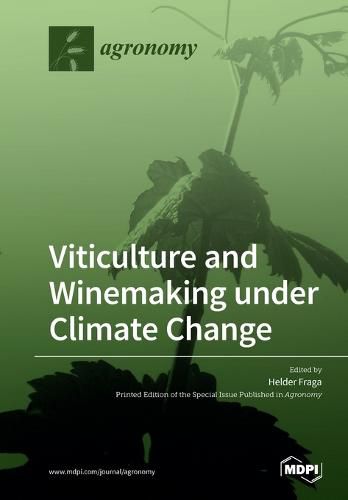Readings Newsletter
Become a Readings Member to make your shopping experience even easier.
Sign in or sign up for free!
You’re not far away from qualifying for FREE standard shipping within Australia
You’ve qualified for FREE standard shipping within Australia
The cart is loading…






This title is printed to order. This book may have been self-published. If so, we cannot guarantee the quality of the content. In the main most books will have gone through the editing process however some may not. We therefore suggest that you be aware of this before ordering this book. If in doubt check either the author or publisher’s details as we are unable to accept any returns unless they are faulty. Please contact us if you have any questions.
The importance of viticulture and the winemaking socio-economic sector is acknowledged worldwide. The most renowned winemaking regions show very specific environmental characteristics, where climate usually plays a central role. Considering the strong influence of weather and climatic factors on grapevine yields and berry quality attributes, climate change may indeed significantly impact this crop. Recent trends already point to a pronounced increase in growing season mean temperatures, as well as changes in precipitation regimes, which have been influencing wine typicity across some of the most renowned winemaking regions worldwide. Moreover, several climate scenarios give evidence of enhanced stress conditions for grapevine growth until the end of the century. Although grapevines have high resilience, the clear evidence for significant climate change in the upcoming decades urges adaptation and mitigation measures to be taken by sector stakeholders. To provide hints on the abovementioned issues, we have edited a Special Issue entitled Viticulture and Winemaking under Climate Change . Contributions from different fields were considered, including crop and climate modeling, and potential adaptation measures against these threats. The current Special Issue allows for the expansion of scientific knowledge in these particular fields of research, as well as providing a path for future research.
$9.00 standard shipping within Australia
FREE standard shipping within Australia for orders over $100.00
Express & International shipping calculated at checkout
This title is printed to order. This book may have been self-published. If so, we cannot guarantee the quality of the content. In the main most books will have gone through the editing process however some may not. We therefore suggest that you be aware of this before ordering this book. If in doubt check either the author or publisher’s details as we are unable to accept any returns unless they are faulty. Please contact us if you have any questions.
The importance of viticulture and the winemaking socio-economic sector is acknowledged worldwide. The most renowned winemaking regions show very specific environmental characteristics, where climate usually plays a central role. Considering the strong influence of weather and climatic factors on grapevine yields and berry quality attributes, climate change may indeed significantly impact this crop. Recent trends already point to a pronounced increase in growing season mean temperatures, as well as changes in precipitation regimes, which have been influencing wine typicity across some of the most renowned winemaking regions worldwide. Moreover, several climate scenarios give evidence of enhanced stress conditions for grapevine growth until the end of the century. Although grapevines have high resilience, the clear evidence for significant climate change in the upcoming decades urges adaptation and mitigation measures to be taken by sector stakeholders. To provide hints on the abovementioned issues, we have edited a Special Issue entitled Viticulture and Winemaking under Climate Change . Contributions from different fields were considered, including crop and climate modeling, and potential adaptation measures against these threats. The current Special Issue allows for the expansion of scientific knowledge in these particular fields of research, as well as providing a path for future research.